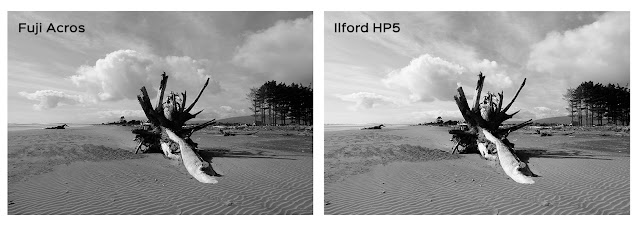Last weekend (as I write this) promised beautiful sunny weather, so I was very keen to get out and use the Fuji X-E1. I decided to head to one of my favourite spots to shoot - Lake Brunner at Moana. I'm glad I did.
 |
| Early morning at Lake Brunner Jetty. Fujifilm X-E1 with Fujinon 16-50mm. f/10 @ 1/6th sec, ISO 200. Cokin ND + ND Grad |
It was a beautiful - picture perfect morning, and I was very excited to be out with a new camera, creating a new vlog for my Youtube channel. You can see the vlog about the morning
here.
In my limited time shooting with the X-E1, I've been super impressed with the 16MP x-trans sensor. I want a lightweight travel camera that I will also be happy to use for more 'serious' photography should the need arise. From what I can tell so far from using the X-E1 briefly on a couple of trips, this could very well be the answer to my prayers.
I set up for the image above with the X-E1 on a tripod, and used a couple of Cokin ND filters in a 'P' square filter holder. Even though it's a fairly small camera, the larger 'P' filters didn't look out of place on the front of the 16-50mm kit lens. And the final result? Absolutely gorgeous!
 |
| Tour Boat, Lake Brunner. f/8 @ 1/125th, ISO 250. Custom film simulation (Acros) |
One of the exciting things I enjoy when using the Fujifilm system are the film simulations. Especially the 'custom' film simulation settings where you can create your own. I am going to write separate articles on a few of my custom film recipes in future blog posts, but above is an example of one of them. It's a black and white recipe I've called 'Acros' (after my favourite Fuji b&w film stock). The later Fujifilm cameras (the X-E3 and X-T3) with the third gen x-trans sensor actually have an Acros b&w film simulation already supplied by Fujifilm. The first generation cameras don't. So I've made my own. I have no idea if it comes close to replicating Fujifilm's own Acros film mode - but it looks good to me! 😃
 |
| Boats in the Bay. Fujifilm X-E1 with Fujinon 16-50mm. f/8 @ 1/125th, ISO 250 |
When the morning brightened and some of the mist cleared, I took the camera off of the tripod and moved around taking images hand-held. The range-finder style X-E1 cries out to be used hand-held - especially with the lightweight Fujinon 16-50mm 'kit' lens attached. The combination is super versatile, and hardly weighs anything at all. There's just enough heft to know that you're carrying something, and to create a stable platform to shoot from. This is also helped by using the evf up to the eye, providing another point of contact for stability. This is something I dearly missed on the Olympus Pen E-P3 that lacked an evf (electronic viewfinder).
Some people moan about electronic viewfinders, but I love them. The X-E1 has a very high resolution 2.36 million dot evf which is very clear and bright, although it can be a little slow to refresh when first placed up to the eye. It's not bad, it's just not instant. Other's have complained that the focus point pixilates when locking on focus before taking a shot, but if it does, it hasn't bothered me. I don't think it's as 'quick' as the 2.36 million dot evf's in the Olympus OM-D EM5II or OM-D E-M1, but it's also not horrible either.
 |
| Lake of the Long White Cloud. Fuji X-E1 with Fujinon 16-50mm. f/8 @ 1/160, ISO 200. |
At the end of the day (metaphorically - not literally speaking), what really matters with any system, is the image quality (IQ). And this, I'm happy to report, the Fuji X-E1 has in spades! The APS-C sized x-trans sensor is absolutely amazing, and produces drop dead gorgeous files - both RAW and Jpeg. The sensor is configured differently from the standard 'bayer-pattern' type sensor (just Google it), so it doesn't require an anti-aliasing filter. Hence, the files are super sharp, super clear, and drop dead gorgeous (did I mention that already?). Even the RAW files are bright, clear and punchy - not drab and dull like those from other systems.
 |
| Lake Brunner, Moana. Fuji X-E1 with Fujinon 16-50mm. f/8 @ 1/300th, ISO 200 |
It may be small, it may be lightweight, and it may look like an old 1970s range-finder - but the X-E1 punches way above its weight with its final image output. I'm seriously impressed with this little camera - not only as a travel companion, but actually as a possible replacement for my full-time landscape shooter! Seriously - it's that good.
I've 'waited' a long time to try out the Fujifilm system. Using the X-E1 has got me scratching my head and wondering why the heck it's taken me so long! Hindsight is a wonderful thing...








Comments
Post a Comment